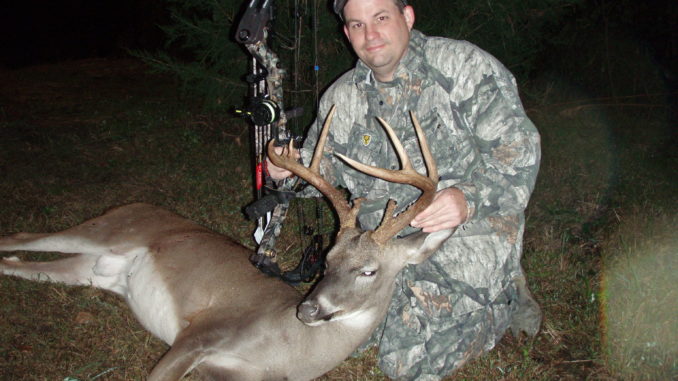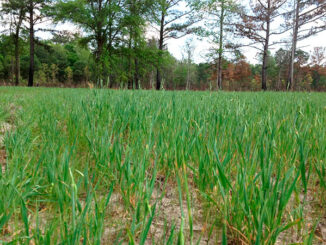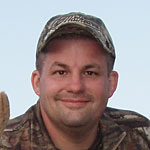
With the rut close at hand, stay in the woods
November means one thing to most bowhunters: time to hunt whitetails. As the most widely distributed, abundant and accessible big-game animal in North America; they are hunted more than any other species. Most bowhunters cut their teeth on whitetails, and there is no time better and more fun to hunt them than during the rut.
Each November, many hunters make the trek to the promised land of whitetails, the Midwest, to get in on this action. However, November marks the beginning of increased buck movement almost everywhere across the Southeast.
Throughout the Midwest, early November is “game time.” This time is the peak of breeding and chasing across most of that region. Bowhunters who travel there are treated to some of the best that whitetails has to offer. Calling, rattling, scents and decoys all work well. Because of shorter gun seasons that often don’t coincide with the rut, bucks in these states often reach older age classes and massive sizes. The terrain of open crop fields with wooded draws and fingers generally make deer easier to pattern, and therefore, to set up within bow range of them. Also because of reduced firearms pressure, these deer are more likely to move about during shooting hours. Every bowhunter owes it to themselves to hunt this area in November at least one time.
Meanwhile, in much of the Southeast, November is a time of transition, as bucks go from the pre-rut to the peak of the breeding season. They go from focusing on feeding heavily and establishing dominance to chasing in the space of a week or so. They are still focused on high-fat, high-calorie foods like acorns, at the same time, becoming much more interested in does and less tolerant of other bucks as testosterone levels increase.
Smart hunters will notice this change and shift the focus of their hunting around food sources more towards travel routes.
Nearly all species of oaks have been putting their acorns on the ground for some time, and deer can quickly change their preferences as different ones become available. I’ve played “musical feed trees” with the deer and lost more times than I’d like to admit. Still, there’s nothing like finding a hot oak tree that’s raining acorns, with the ground beneath it covered with deer tracks and steaming deer droppings.
Rubs and scrapes are typically found before Halloween, and numbers will be on the increase through November. While I usually don’t hunt over scrapes, they make a great location to set up trail cameras. Even though a lot of your photos will be at night, this will let you know what bucks have stayed in your area, as well as show any new bucks that may have moved in. You can then use intuition and past experience to make an educated guess as to where those bucks are travelling during shooting hours, and focus your efforts there.
Here are just a few thoughts about equipment and tactics for this time of year. During the chase phase when bucks are actively chasing does, many hunters wrongly assume that they are more tolerant of human scent and become complacent in their scent-control regimen. This is a major error. Although bucks may be distracted by thoughts of love in the air, most does haven’t let their guard down at all. Many hunters have had their chances ruined by an old doe who picked them up just before they could get an arrow into the big buck that was following her. Don’t be one of these hunters; maintain your regimen religiously.
Another thought is your bow sight. Although I usually hunt with a single-pin sight at other times, I switch to a multi-pin sight during the rut. When bucks are chasing does, it is often hard to stop them, and a lot of times they don’t stop where you want or expect them to. You may only have a split second to aim and release, so every second counts here.
Sights with more than one pin help reduce the time it takes to adjust your aim accordingly. So does pre-ranging some landmarks in the area. These also help when a buck “hangs up” when responding to a call or rattling. If you have several spots pre-ranged, it’s simply a matter of using the correct pin when aiming.
Everyone who bowhunts for deer looks forward to November. A lot of leaves have fallen, and more are on their way to the ground, plus, bucks are on the prowl. You should spend as much time as you can in the woods. Don’t be set in your ways, afraid to try new things like calling, rattling or a decoy. A buck might not respond 99 percent of the time, but the one time he does, you’ll never forget it.
Stay focused and diligent when it comes to your scent control, and you’ll increase your chances for success. Tweak your bow setup to maximize its effectiveness. Things happen very quickly in the deer woods this time of year, and you have to be both willing and able to adjust rapidly if you want to be successful. Most of all, have fun and enjoy all that the woods have to offer this month. This is what we work and prepare for the rest of the year. Good luck and good hunting.





Be the first to comment